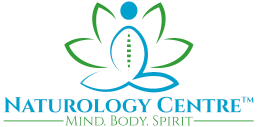Nervous‑system‑focused reflexology for resilience, better sleep, and relief from tension‑related patterns.
How Reflexology Works
Reflexology employs targeted pressure on mapped points of the feet, hands, and cranial areas that correspond to specific body systems. Many people find that it helps shift the body from a stressed state to a more restful and digesting (parasympathetic) mode, reducing muscle tension, easing a busy mind, and promoting more restorative sleep.
- Regulates autonomic tone (supports vagal balance)
- Softens tension patterns (neck/shoulders, low‑back, jaw/TMJ)
- Supports circulation & lymphatic flow
At Naturology Centre Moncton, sessions blend Foot, hand, and cranial reflexology with a calm, clinical approach.
Service Options & Add‑Ons
Foot Reflexology
Deeply grounding, this is our most popular option for a full‑body reset through the feet.
- Best for: heavy or achy feet, long hours standing or at a desk, overall nervous‑system downshift.
- Includes: precise thumb‑walking, holds on mapped reflex areas (e.g., spine, digestive, sinus, pelvic/low‑back).
- Pair with: Vagus Nerve Balancing for busy‑mind patterns or PEMF to deepen relaxation.
Hand Reflexology
An excellent alternative when feet are sensitive or post‑injury, and a favourite for device/keyboard overuse.
- Best for: desk & device strain, forearm tightness, when shoes/compression make the feet work less comfortably.
- Includes: focused work to palm, dorsum, and forearm reflex zones; simple self‑care you can repeat at home.
- Pair with: Indian Head Massage for ease in the neck/shoulders.
Cranial Reflexology
Gentle cranial mapping to calm the sympathetic “go‑go‑go” and invite deeper rest.
- Best for: busy‑mind patterns, jaw/temporal tension, non‑restorative sleep.
- Includes: light, sustained contacts and rhythmic sequences aligned with cranial reflex maps.
- Pair with: Indian Head Massage or Vagus Nerve Balancing for a head-to-toe calming experience.
Vagus Nerve Balancing
Targeted techniques to support autonomic regulation and a shift toward rest‑and‑digest.
- Best for: stress reactivity, anxious mood, post‑concussion recovery plans (complementary), digestive comfort support.
- Includes: ear (auricular) reflex points, gentle neck/scalp sequences, breath pacing and humming cues.
- Pair with: Cranial Reflexology for profound stillness.
Indian Head Massage
Seated or table‑based work for scalp, face, neck, and shoulders. Oil or no‑oil options to suit your hair and schedule.
- Best for: tension headaches, eye strain, desk‑related shoulder tightness.
- Includes: rhythmic strokes, pressure points, and gentle mobilization for head/neck comfort.
- Pair with: Cranial Reflexology when sleep and deep calm are priorities.
PEMF Therapy (Add‑On)
Pulsed Electromagnetic Field can be incorporated into your session to enhance relaxation and support local circulation.
- Best for: those seeking a deeper unwind or localized recovery support, paired with reflexology.
- Includes: low‑intensity, time‑varying magnetic field applied via pad/coil while you relax.
- Safety: refer to the contraindications below; this product is not suitable for use with implanted/external electronic devices, unknown cardiac leads, or external infusion pumps. Other cautions apply.
Who Books Reflexology at Our Moncton Clinic
- Stress, a busy mind, or restless sleep
- Headaches or jaw tension (TMJ)
- Neck, shoulder, and lower back tightness
- Heavy legs/feet; plantar fasciitis
- Post‑injury or post‑MVA recovery (complementary)
- Chronic fatigue syndrome or fibromyalgia (supportive care)
- General tune‑up to reset body & mind
- Pairing with Massage Therapy, Osteopathy, Acupuncture, or Hypnotherapy
First Visit & How to Prepare
- Hydrate and eat lightly; avoid heavy meals immediately beforehand.
- Wear or bring comfortable layers; sessions are fully clothed.
- Share relevant health history, medications, and any implants/devices.
- Most people feel calm or pleasantly drowsy, while others experience an energizing effect.
- Expect gentle, specific pressure — discomfort is minimal and adjustable.
- We’ll provide simple at-home tips to help you extend your results.
Safety, Cautions & PEMF Contraindications
Reflexology is a non-invasive and complementary therapy; it does not diagnose or treat disease and is not a substitute for medical care.
Reflexology — Frequently Asked Questions
Is reflexology painful?
No. Pressure is firm yet gentle and always adjusted to your comfort. You’re fully clothed and can request changes at any time.
How many sessions will I need?
Many feel benefits after 1–3 visits. For persistent patterns (e.g., sleep or tension), a short series (4–6 visits) can build momentum; spacing is personalized.
Can I choose Foot, Hand, or Cranial only?
Yes — or combine them. We tailor the focus to your goals. Cranial reflexology pairs well with Indian Head Massage and vagal support.
Can reflexology be combined with PEMF?
Yes, if appropriate for you. PEMF is an optional add‑on used to deepen relaxation and circulation; see contraindications above.
Do you list prices?
Yes — all current rates are on our booking platform and our fee schedule.
Visit the practitioner bio for Dawn Richardson, RRT.
